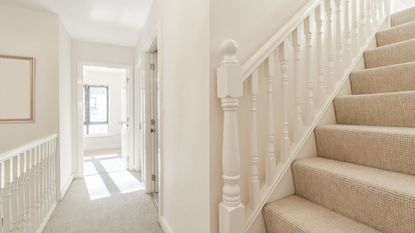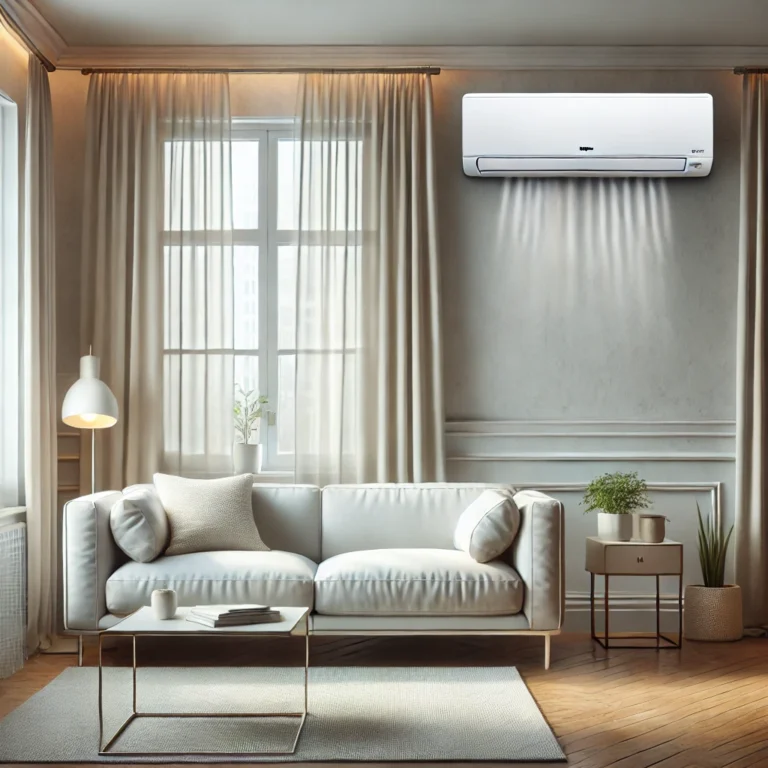How to Keep an Upstairs Room Cool in the Summer: 7 Effective Strategies
To keep an upstairs room cool in the summer, insulate and ventilate the attic, consider a white roof, block the sun, limit the use of heat-generating appliances, replace incandescent lights with CFLs, and turn on fans on the second floor to increase airflow. These short-term fixes include using ceiling fans or standalone AC units, keeping blinds and curtains closed during the day, and avoiding the use of heat-generating appliances during the hottest hours.
Additionally, ensuring that vents are properly open, installing lightly colored curtains or drapes, keeping heat-generating appliances off, running a fan when in the room, checking and inspecting ductwork and insulation can also help in reducing heat and keeping the upstairs cool during the summer.
1. Insulate The Attic
Insulate the Attic:
Insulating the attic is an effective way to keep an upstairs room cool in the summer. Proper insulation helps to lower the temperature by preventing hot air from entering the room. It creates a barrier that reduces heat transfer, keeping the room cool and comfortable.
Insulation also offers additional benefits in terms of energy efficiency and cost savings. It helps to retain cool air generated by air conditioning systems, reducing the need for constant cooling and lowering energy consumption. This, in turn, can lead to cost savings on utility bills.
By insulating the attic, you can create a more comfortable living environment on the upper floor without relying solely on air conditioning. It is a long-term solution that provides ongoing benefits throughout the hot summer months.
2. Ventilate The Attic
Proper attic ventilation is crucial for maintaining a comfortable indoor temperature, especially in the summer. When it comes to keeping an upstairs room cool, it is important to improve airflow in the attic to reduce heat buildup. Here are some ways to achieve better ventilation:
- Install attic vents to allow hot air to escape and circulate fresh air.
- Add soffit vents to bring in cool air from the outside.
- Consider adding a ridge vent or gable vent for additional airflow.
- Ensure that attic insulation is properly installed and doesn’t block the vents.
- Use reflective roofing materials or coatings to reduce heat absorption.
- Regularly clean and maintain the attic vents to prevent blockage.
3. Consider A White Roof
Did you know that a white roof can help keep your upstairs room cool in the summer? White roofs are made of reflective roofing materials that reduce heat absorption. Unlike darker roofing materials that absorb the sun’s rays, white roofs reflect the sunlight away, preventing heat buildup in your home. This can significantly help in keeping your upstairs room cooler during those hot summer months.
By choosing a white roof, you can reduce the amount of heat that enters your home through the roof. This, in turn, can help save energy and reduce the need for excessive air conditioning. Additionally, white roofs can also extend the lifespan of your roof by reducing heat-related wear and tear.
Consider consulting with a roofing professional to explore the benefits of a white roof for your home. With a white roof, you can create a more comfortable and energy-efficient living environment in your upstairs room during the summer.
4. Block The Sun
Effective strategies for blocking sunlight from entering the upstairs room:
- Use blinds, curtains, or window films to prevent solar heat gain. These options can effectively block sunlight and reduce the amount of heat entering the room.
- Consider using light-colored or reflective window coverings, as they can help to reflect the sun’s rays and keep the room cooler.
- Make sure the blinds or curtains are properly fitted and cover the entire window to minimize any gaps where sunlight may still enter.
- Install blackout curtains or shades, which are specifically designed to block out light and can be particularly effective in keeping the room cool.
By employing these strategies, you can effectively block the sun and keep your upstairs room cool during the summer. Additionally, it is important to limit the use of appliances that generate excessive heat and to properly ventilate the room to promote airflow.
5. Limit The Use Of Appliances That Generate Too Much Heat
Common household appliances that generate excessive heat and how to reduce their usage:
|

Credit: www.homesandgardens.com
6. Replace Incandescent Lights With Compact Fluorescent Lamps
Replace Incandescent Lights With Compact Fluorescent Lamps:
One of the ways to keep an upstairs room cool during the summer is by replacing incandescent lights with compact fluorescent lamps. Incandescent lights contribute to heat generation, which can increase the temperature in a room. By switching to energy-efficient lighting options such as compact fluorescent lamps, you can reduce the heat emitted and keep the room cooler. These lamps produce less heat and consume less energy, making them a better choice for keeping your upstairs room cool. In addition to reducing heat generation, energy-efficient lighting options also help in saving electricity and reducing energy costs. So, make the switch to compact fluorescent lamps and enjoy a cooler and more energy-efficient upstairs room.
7. Turn On Fans On The Second Floor To Increase Airflow
The role of fans in improving air circulation and cooling the upstairs room.
When it comes to keeping an upstairs room cool in the summer, turning on fans on the second floor plays a crucial role in increasing airflow and improving air circulation. Fans help to circulate the existing air in the room, which can help to reduce the temperature and create a more comfortable environment.
To maximize the effectiveness of fans in maintaining a comfortable temperature, consider the following tips:
- Place fans strategically around the room to create cross ventilation.
- Make sure the fans are facing towards the windows or doors to push hot air out and draw in cooler air.
- Use ceiling fans on a higher speed setting to create a breeze-like effect.
- Consider using a combination of ceiling fans and floor fans for optimal airflow.
- Keep the doors and windows open to allow fresh air to enter the room.
- Clean the fan blades regularly to ensure proper airflow.
By utilizing fans effectively, you can help keep your upstairs room cool and comfortable during the summer without relying solely on air conditioning.
Frequently Asked Questions For How To Keep An Upstairs Room Cool In The Summer
How Do You Cool A Hot Room Upstairs?
To cool a hot room upstairs, you can take the following steps: 1. Insulate the attic. 2. Ventilate the attic. 3. Consider a white roof. 4. Block the sun. 5. Limit the use of heat-generating appliances. 6. Replace incandescent lights with compact fluorescent lamps.
7. Turn on fans on the second floor to increase airflow. 8. Use ceiling fans or standalone AC units to circulate air. 9. Keep blinds and curtains closed during the day. 10. Avoid using heat-generating appliances during the hottest hours of the day.
How Can I Cool My Upstairs Of A 2 Story House?
To cool your upstairs in a 2-story house, try these tips: 1. Insulate and ventilate the attic. 2. Consider a white roof to reflect sunlight. 3. Block the sun with blinds or curtains during the day. 4. Use ceiling fans or standalone AC units to circulate air.
5. Avoid using heat-generating appliances during hot hours. 6. Replace incandescent lights with energy-efficient alternatives. 7. Turn on fans on the second floor to increase airflow. These methods can help maintain a comfortable temperature upstairs without relying solely on AC.
Why Is Ac Not Cooling Upstairs?
AC may not be cooling upstairs due to outdated systems, blocked vents, dirty filters, leaking air ducts, or inadequate insulation.
Why Is My Upstairs Bedroom So Hot?
1. Hot air rises, causing upstairs bedrooms to be hotter than lower levels. 2. Ensure proper insulation and ventilation in the attic. 3. Use light-colored curtains or drapes to reflect sunlight. 4. Avoid using heat-generating appliances during the hottest hours.
5. Run a fan to increase airflow in the room. 6. Keep HVAC fan set to ‘on’ for better circulation. 7. Check ductwork and insulation for any issues. 8. Close doors to the hottest rooms to keep other areas cooler.
9. Consider installing ceiling fans or stand-alone AC units for additional cooling. 10. Keep blinds and curtains closed during the day to block out sunlight.
Conclusion
Like a good time? Sweating profusely in an overheated upstairs room during the scorching summer months. Fortunately, there are several effective strategies to keep your upstairs room cool without relying on air conditioning. First, make sure to insulate and ventilate your attic to minimize heat transfer.
Consider installing a white roof to reflect sunlight and block the sun from directly heating up your room. Limit the use of heat-generating appliances and replace incandescent lights with energy-efficient alternatives. Additionally, turning on fans on the second floor can increase airflow and improve overall comfort.
Remember to keep blinds and curtains closed during the day to block out sunlight. By implementing these simple and practical tips, you can create a cool and comfortable upstairs oasis that will help you beat the summer heat. Say goodbye to hot and stuffy rooms and welcome a refreshing and enjoyable living space.




